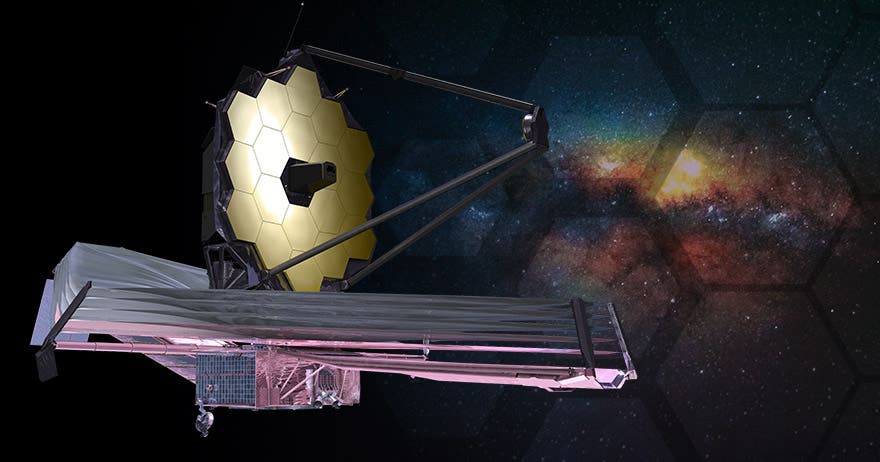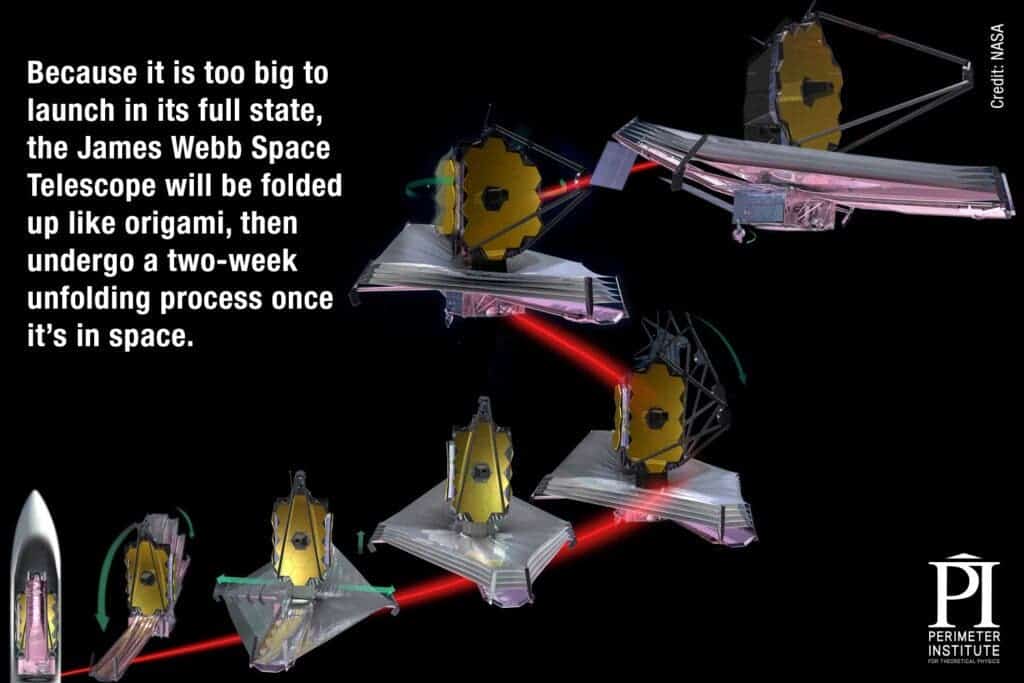
It was an anxious morning at the Kourou spaceport in French Guiana, where the $10 billion James Webb Telescope was readied for launch on board an Ariane rocket. At 12:20 GMT, after years of delays and budget extensions, liftoff commenced, followed by a grueling half-hour until James Webb arrived in space under a backdrop of cheers and ovations. This was the easy part, though. Over the course of two weeks of hell, the telescope will undertake a series of risky deployment maneuvers that will keep mission engineers on their toes throughout this critical period.
The giant space telescope developed by NASA, in collaboration with the European and Canadian space agencies, is the successor of Hubble, which for the last three decades has made monumental contributions to science, such as pinning the age of the universe at 13.8 billion years and helping determine the rate at which it expands.
Webb, named after one of the architects of the Apollo missions that brought astronauts to the moon, is the largest, most powerful space telescope in history. It’s about 100 times more powerful than Hubble, thanks to a 6.5-meter gold mirror that is nearly three times larger than Hubble’s main reflector, allowing scientists to peer inside the early cosmos.
The speed of light, the universe’s speed limit, is fixed. So the stars we see in the night’s sky appear as they once had during the very moment the photons were emitted perhaps millions, if not billions of years ago. Since the infrared telescope can see farther and fainter objects than the previous state of the art, Webb can be envisioned as a sort of time machine that allows astronomers to study the evolution of the universe, from humble beginnings to the present day. This also includes the movement of galaxies, which may finally reveal the nature of the highly elusive dark matter that is thought to be responsible for the accelerated expansion of the universe.
Indeed, Webb should be able to see light from the very first stars that appeared about 13.5 billion years ago. In these pioneering stellar nurseries, the first heavy elements were forged. These include carbon, nitrogen, and phosphorus, without which life as we know it couldn’t have been possible. We’re all stardust, after all.
Speaking of life, Webb’s impressive reach means astronomers will soon be able to image and analyze the atmosphere of distant planets many light-years away. Some may prove to be habitable.
But before any of these extraordinary feats are possible, the James Webb telescope will need to overcome numerous challenges. Its observation position is located nearly 1.5 million kilometers away, where it is very cold. This is no random location. At -223 degrees Celsius, the telescope virtually stops emitting infrared frequencies that carry heat, which could obstruct and muddy the infrared from very distant cosmic objects.
It will take about one month for Webb to reach its position and become fully operational, but the next two weeks are particularly critical. The telescope was cleverly folded like a giant origami to fit inside the nosecone of the Ariane rocket. The downside is that all of these components have to be unfurled and if a motor gets jammed the entire telescope could end up the most expensive piece of space junk ever.

Mission engineers will first unfurl the huge mirror, made up of 18 gold-plated beryllium hexagons, along with its special, Kapton-made shield that is meant to block light from the sun, Earth, and the moon, thereby keeping it cool.
“It’s going to give us a better understanding of our universe and our place in it: who we are, what we are, the search that’s eternal,” Nasa administrator Bill Nelson said earlier this week, adding that “when you want a big reward, you have to usually take a big risk.”
Once deployed at its stationary observation location, known as L2, mission operators will switch on various electronics and scientific instruments. Calibration will continue for another five months, so six months from now astronomers hope to gain access to the very first Webb observations.
“We launch for humanity this morning,” Arianespace’s chief executive Stéphane Israël said minutes before liftoff. “After Webb, we will never see the skies in quite the same way.”



